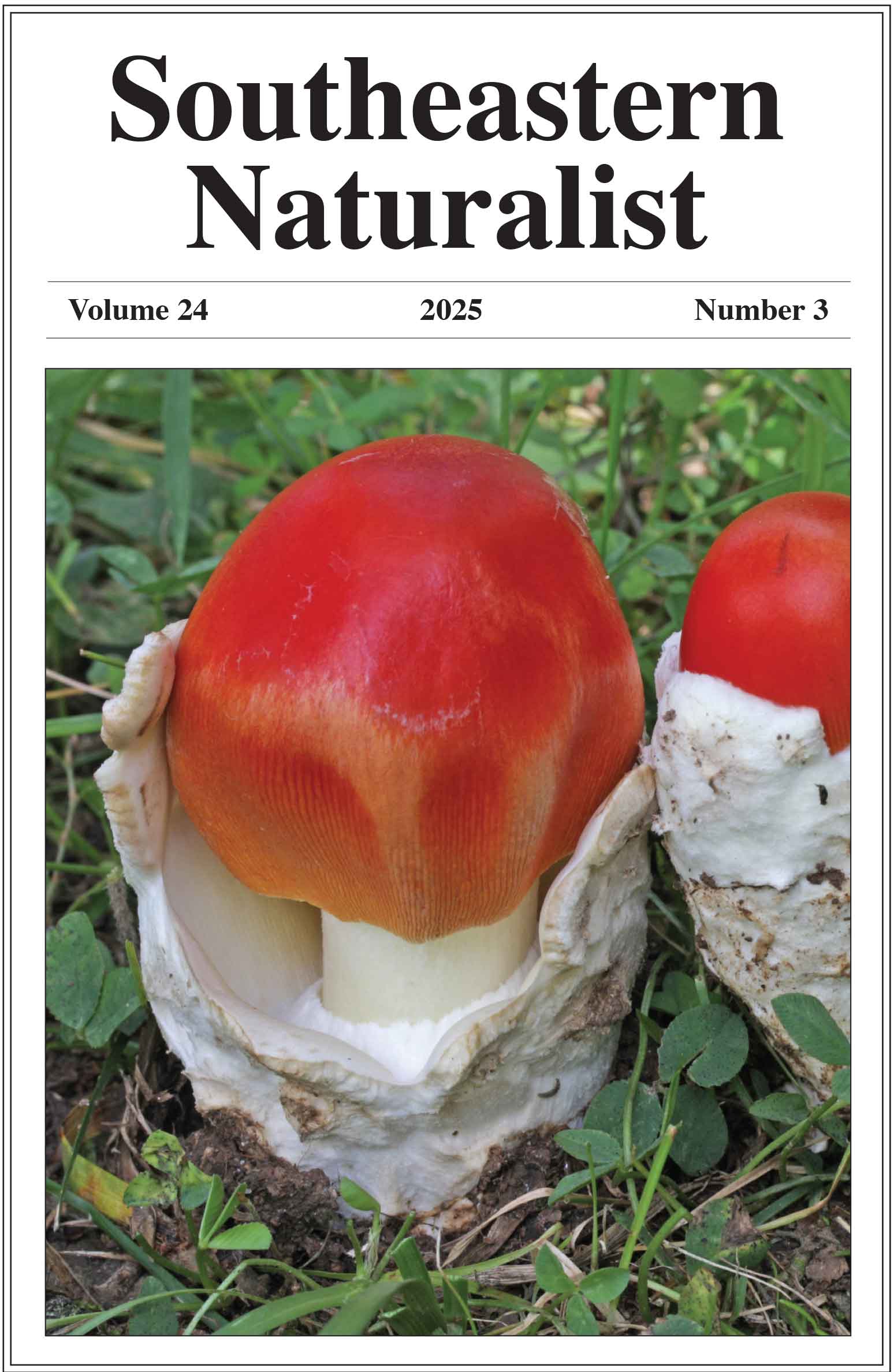Patterns and Causes of Intraspecific Diversity in Selected High-Elevation Entomobryomorpha (Collembola) from the Southern Appalachian Mountains
Kailyn N. Shealy1 and Michael S. Caterino1,*
1Department of Plant and Environmental Sciences, 277 Poole Agricultural Center, Clemson University, Clemson, SC 29634-0310. *Corresponding author.
Southeastern Naturalist, Volume 23, Issue 4 (2024): 492–515
First published early online: 18 December 2024
Abstract
Due to their physical isolation, high-elevation areas in the Appalachian Mountains host a unique fauna facing many climatic challenges. Moving forward with conservation management of these ecosystems requires an intensive knowledge of species distributions. Here, we analyze the intraspecific diversity of elongate springtails (Entomobryomorpha) at select high-elevation sites in the southern Appalachian Mountains, and offer preliminary assessment of potential underlying biogeographic drivers. We collected Collembola from various localities; utilized COI metabarcoding for almost 700 springtails in the Isotomidae, Entomobryidae, and Tomoceridae; and conducted phylogenetic analysis and automated species delimitation to understand patterns of genetic diversity. The results suggest a very rich fauna with high levels of local endemicity. Most putative species are known from only 1 or a few geographically proximate sites (in the same mountain range), suggesting that local isolation on sky islands is at least partly responsible for regional diversity patterns. However, some larger-bodied species have larger ranges, some even transgressing recognized biogeographic boundaries in the region, such as the French Broad River valley, although even these show a degree of genetic isolation and partitioning by mountain and range. Interpretation of our results is limited by small sample sizes for many putative species and by limited geographic sampling between high-elevation areas. Nonetheless, they indicate a fauna much richer and finely subdivided than the literature currently suggests, and underscore the need for additional, more intensive studies on the group in the regions.
![]() Download Full-text pdf (Accessible only to subscribers. To subscribe click here.)
Download Full-text pdf (Accessible only to subscribers. To subscribe click here.)
Access Journal Content
Open access browsing of table of contents and abstract pages. Full text pdfs available for download for subscribers.
Issue-in-Progress: Vol. 24( 4) ... early view
Check out SENA's latest Monograph and current Special Issue in progress:













 The Southeastern Naturalist is a peer-reviewed journal that covers all aspects of natural history within the southeastern United States. We welcome research articles, summary review papers, and observational notes.
The Southeastern Naturalist is a peer-reviewed journal that covers all aspects of natural history within the southeastern United States. We welcome research articles, summary review papers, and observational notes.